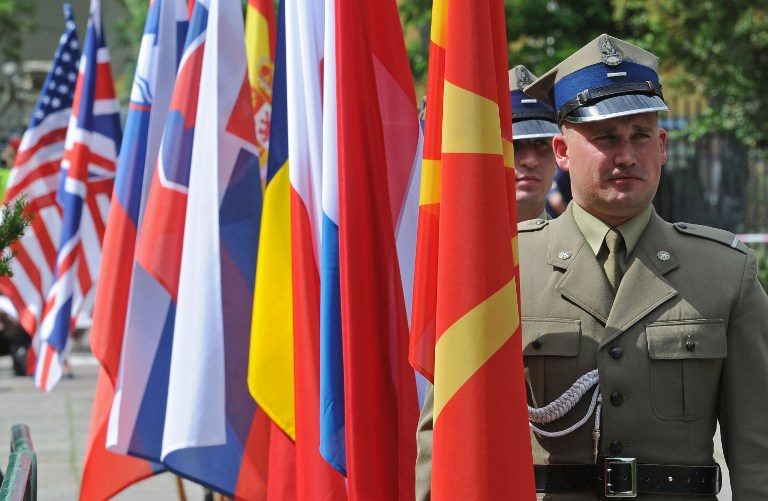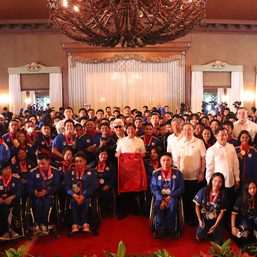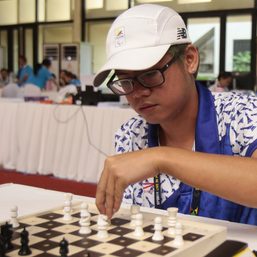SUMMARY
This is AI generated summarization, which may have errors. For context, always refer to the full article.

WARSAW, Poland (UPDATED) – Thousands of NATO troops hit the ground in Poland in a massive show of force Tuesday, June 7, as the alliance launched its biggest war games in eastern Europe since the Cold War.
The 10-day Anaconda manoeuvers are intended to shore up regional security in the face of the West’s standoff with an increasingly assertive Russia.
But the Kremlin reacted angrily.
“The exercises… do not contribute to an atmosphere of trust and security,” said President Vladimir Putin’s spokesman Dmitry Peskov.
“Unfortunately we are still witnessing a deficit in mutual trust.”
The exercises come a month ahead of a NATO summit in Warsaw set to seal its largest revamp since the Cold War by deploying more troop rotations to eastern European members spooked by Russia’s 2014 annexation of Crimea from Ukraine.
Moscow fiercely opposes the NATO moves, billed by the US-led alliance as part of its “deterrence and dialogue” strategy.
Anaconda, the latest in a string of NATO manoeuvers in the region, involves 31,000 soldiers from 24 states, including 14,000 from the US, 12,000 Poles, and 1,000 from Britain, as well from former Soviet “Partnership for Peace” states like Ukraine.
Polish Defense Minister Antoni Macierewicz said Monday that NATO was “checking the alliance’s ability to defend its eastern flank.”
The exercises are NATO’S biggest since the Trident drills last year involving 36,000 troops in Italy, Spain, and Portugal.
‘Cold War is history’
NATO has nevertheless sought to reassure Moscow, with Secretary General Jens Stoltenberg insisting last week: “the Cold War is history and we want it to stay that way.”
Russia has long protested at NATO’s expansion in its Soviet-era backyard and in 1997 NATO formally agreed not to install permanent bases in former Warsaw Pact states.
But some analysts question whether NATO’s current strategy, based on the deployment of rotational rather than permanent forces, can really secure its eastern flank.
“When push comes to shove, how long will it really take to mobilize at break-neck speed troops in the possibility of a threat of an attack?” Carnegie Group analyst Judy Dempsey told AFP.
“If it (NATO) is not going to permanently deploy troops, then it really should speed up infrastructure to move troops there (to eastern Europe) quickly.”
Since the Ukraine conflict erupted in 2014, NATO has established a high-speed “spearhead” response force, complete with forward command and logistic centers in eastern states.
But Dempsey questioned the usefulness of the relatively small units in the face of “huge conventional forces on the other side.”
Moscow has significantly stepped up its presence in the Baltic Sea area and its jets regularly violate the airspace of smaller ex-Soviet NATO allies like Estonia. In April, they even buzzed a US naval destroyer.
“Russian exercises are sophisticated, they’re big, they’re intimidating, and look what they’re doing in Kaliningrad,” Dempsey said, referring to Moscow’s manoeuvers in the Russian enclave sandwiched between Poland and Lithuania.
“It’s like a warning to NATO: ‘don’t forget, we’re right inside NATO territory.'”
‘Test of wills’
While NATO cut all practical cooperation with Moscow over Ukraine, the alliance plans formal talks with the Russians before the July 8-9 summit.
But just last month Moscow and Washington accused each other of mounting an aggressive military presence in Europe as the United States broke ground on a missile shield in Poland and Romania.
Russia has vowed to “end threats” posed by the missile system, despite US assurances it is intended to ward of potential attacks by “rogue” states in the Middle East.
The Kremlin said it would set up 3 new divisions in the west and south of Russia by the end of the year to counter NATO forces near its border.
Describing the confrontation as “a test of wills”, Dempsey said she believes Moscow’s saber-rattling is ultimately aimed at stopping NATO from encroaching even further into its backyard, with ex-Soviet republics Georgia and Ukraine now keen to join the Western alliance. – Mary Sibierski, AFP / Rappler.com
Add a comment
How does this make you feel?





There are no comments yet. Add your comment to start the conversation.